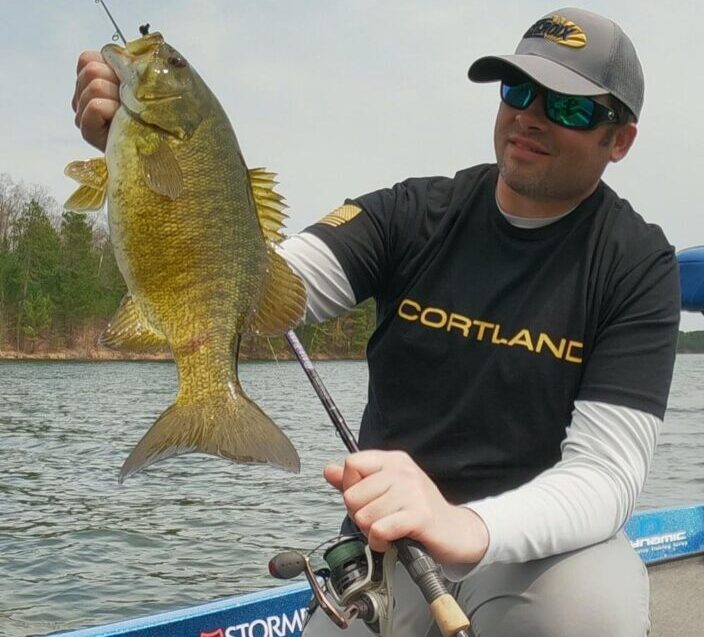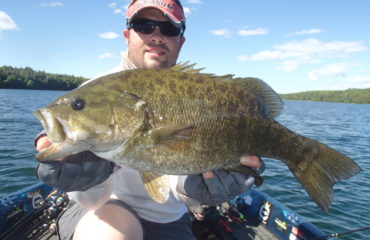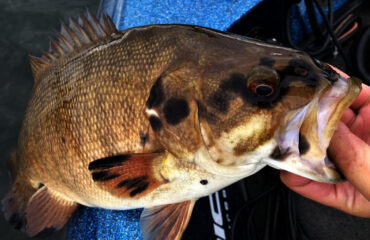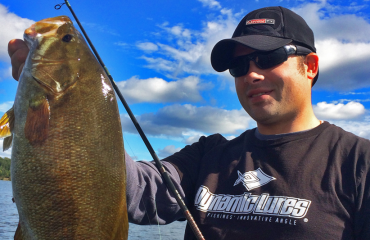Making Magic with Finesse
Finesse fishing for smallmouths has ignited angler interest. More anglers are turning to long spinning rod and high-capacity reel set-ups for achieving long casts with light line presentations.
Browse across the internet, and search through your favorite online retailers and manufacturers. From rod selection, to line choices, baits, and everything in-between, everyone is prioritizing the marketing and sales for long-line finesse fishing.
I used to be of the belief my 20-pound Cortland Masterbraid main-line on a 7-foot MF was light enough for my spinning set-ups. It has the break strength of 6-pound mono. When I started fishing this line in 2011 it was the only line size I’ve ever needed until 2018. While 20-pound is still a big player for me, especially in most snaggy-bottom and monster fish regards, it’s presently considered heavy. Nowadays, this 20-pound line gets spooled on my baitcasting reels that I use for heavier jigging and casting applications for both smallmouths and largemouths.
Each winter off-season, I find myself going on a main-line decrease, downsizing my reel spools to a greater variety of 10, 8, or 5-pound Masterbraid. It’s crazy to think that a size-30 spinning reel can now hold upwards of 250-yards of 5-pound braided main line. On the long rod, unthinkably, it casts baits a mile!
Here’s why my light braids can behave the way they do – Cortland Master Braid is a consistently performing super braid tailor-made for long-cast applications. Constructed and weaved from Cortland’s unique process, “Opti-Con Technology”, its gel-spun fibers are woven into a tighter and stronger braid that stacks better on the reel when spooled, and during operation. Following weaving completion, the line is treated with FiberTech protection, a conditioner that bonds itself to the individual gel-spun fibers that stiffens and improves handling of the line. Like all other braided super-lines, it excels at strike detection, leading to instantaneous hook-sets and long casting distances.
It’s amazing to think that nowadays a 5-pound braided line has the strength and capacity to handle a fish of similar weight or heavier. For example, 5-pound Masterbraid has a breaking strength of less than 1-pound monofilament. Because of the noteworthy advancements in braided lines offered by all manufacturers, very rarely does anyone ever need to fish with antiquated monofilament anymore. Long rods with powerful backbone and lively flex help achieve that perfect handling with finesse baits deployed on a super-thin braided line.
How did we get to this point?
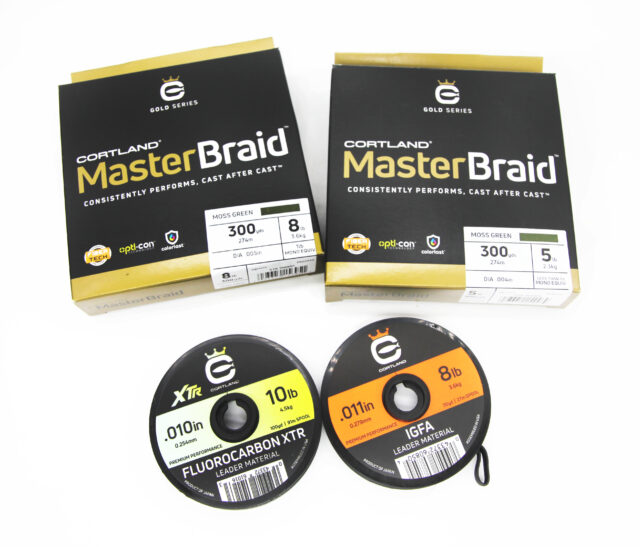
Outwitting the Smart Smallmouth
Smallmouths are experts in sensory detection. Nowadays, more adult smallmouths are wary of overhead boat traffic and high-powered sonars. They’ve become elusive as a result. As these fish undergo changes in behavior and feeding locations, anglers must cater their gear and strategies to these changes. In order to maintain productivity and success, I’ve been turning to finesse and long-cast strategies.
Today, everyone is showing up to the lake with an arsenal of finesse rods and baits rigged up. Whether the strategy calls for jigging or casting, finesse fishing has turned into an arms race.
As adult fish are repeatedly caught and released throughout their lifetime, they learn not to strike certain lures. We see this all the time on pressured community lakes and derby waters. Most days, the shallows of these fisheries get pounded the most. Fish want to feed and spawn in the shallows without feeling exploited, but the pressure forces them to abort those areas and relocate to new areas. So, not only are they conditioned to lures, but they’re also learning to avoid the most pressured lake regions, and angler capture.
More recently, the fishing pressure and overall angling hours on my local lakes sky-rocketed. Smallmouths that customers and I once had to ourselves got hit from several anglers. The fisheries took a beating from capture, re-capture, and harvest in 2020-21. The surviving fish became better educated as a result.
Gone are the days of being the only boat on the water. Nowadays my boat has to use lighter diameter lines (described above) in order to better manipulate subtler and natural presentations, and make longer casts with. Likewise, most casting and jigging set-ups are requiring several feet of fluorocarbon leader line to help conceal and mask the offering. If you don’t come prepared to finesse fish like this, you could swing and miss.
Long rods with large-capacity reels spooled with light lines equate to very far casts.
My boat’s game-plan all changed with this approach in 2022.
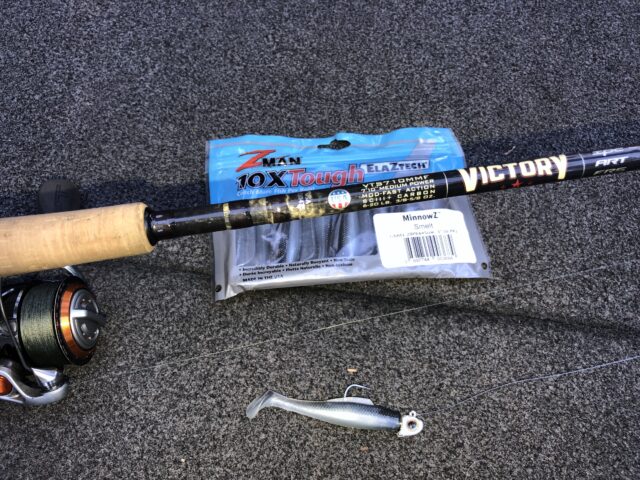
Long Line Strategies
Smallmouths inhabiting almost every lake are seeing some form of each downsized plastic offering on a daily basis. Yet they are also getting more suspicious and conditioned to them. Dropped baits and disengagement are becoming as frequent as pickups. More finesse is now required to keep up with their feeding habits and personalities. More anglers are now turning to lighter lines and longer rods.
Lightweight braids are advantageous for the deployment of most finesse baits. Consider a 1/16-ounce hair jig for example. While this ball of marabou or bucktail might have been too light and impossible to cast with the common set-up of years prior, it’s now possible to launch for extreme distances with 8-foot length rods such as St. Croix’s Victory Crosshair (VTS710MLXF) and my personal favorite, the Legend Tournament Bass Hair Jig (LBTS710MLXF).
Some finesse anglers might not be as like-minded as me. Perhaps you like going old-school with 4 and 6-pound mono instead. The benefits of it remain stretch, flotation, and better control of lure sinking. This could greatly aid and manipulate in the fall rate of that same hair jig being worked with 5-pound braid and fluoro leader through the shallows. I still find applicable year-round uses with mono when casting 3-inch Kalin’s Lunker Grubs and other twister-tail styled moving plastics.
I’m not a fan of operating fluorocarbon lines as a main line, but some prefer it on targeting deeper-holding, suspending fish. This would be a winning formula with spy-baits for sure, and drop-shotting.
More anglers today are rigged up with long rods and light line in order to deploy their favorite finesse baits like these types –
Swimmers
In recent years, no other segment of fishing lures and bait styles has grown exponentially and diversely as paddletails and swimbaits. Many brands feature different designs and variations, models, colorways, and styles. For catching smallmouths quickly, the lineup of soft swimbaits offered by Z-Man Fishing Products accomplishes this task.
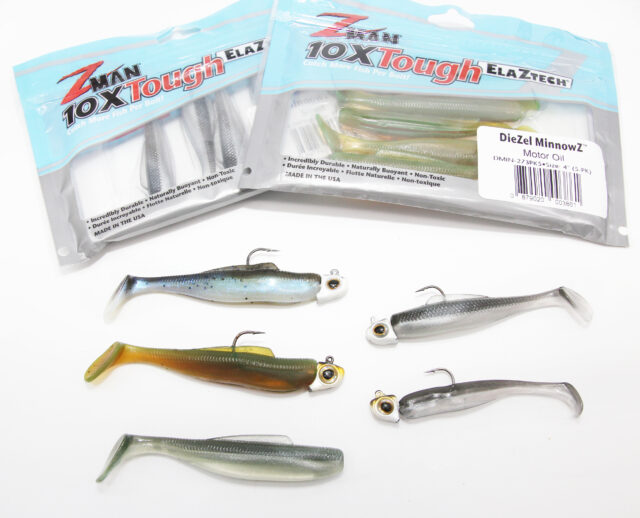
Z-Man’s top-selling baits worldwide, the 4-inch DieZel MinnowZ, 3-inch MinnowZ and 2.5-inch SlimSwimZ replicate the look, action and strike-evoking attraction of a live minnow better than any other soft baits manufactured. These bite sized paddletails conquered the fisheries from my boat in ’22.
Their ElaZtech formulation creates a lifelike swimming action and durability. I am most keen on swimbaits that can pump under any retrieve speed. In this capacity, ElaZtech formulation is a modern marvel.
“I prefer a bait whose tail continues kicking even as you stop the retrieve and let the bait freefall. It’s one minor detail that can make a huge difference, and very few soft plastic paddletails can pull this off because they’re mostly composed of PVC plastics rather than ultrasoft ElaZtech, which offers more freedom to move in the tail,” says Cory Schmidt, Z-Man’s marketing director.
Also benefiting Z-Man’s swimbaits is ElaZtech’s buoyancy, allowing for slower retrieves than other swimbaits. This characteristic is a necessity in my search for smallmouths that could be anywhere in the water column.
Swimmers can come in downsized finesse offerings, too. Z-Man capitalized on this need with the 2.5-inch Slim SwimZ. “On the small side, the little 2.5” Slim SwimZ is one of the most versatile, downsized swimbaits in existence. Put it on a 1/5-ounce Finesse ShroomZ jighead and fish it almost any way you want,” admits Schmidt.
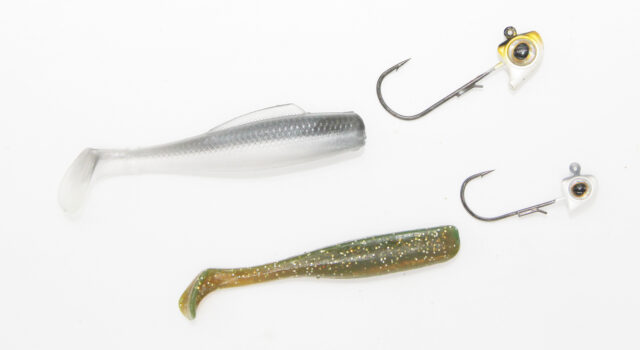
Slightly larger, “The 3-inch MinnowZ is a thin (slightly flattened) profile that can mimic shiners, ciscoes and baby perch—all staple forage in the north. Its medium sized, flattened paddletail lies at a perpendicular (90-degree) angle to the body, which gives it plenty of water resistance and thereby, more rapid tail thumping action. Also means you can retrieve it a little slower and still benefit from its motion and vibration (thump).”
For my long-casting program, I bomb the 2.5 Slim SwimZ and 3-inch MinnowZ with St. Croix’s Victory Open Water (VTS710MMF).
Released in early 2022, this long-cast spinning rod excels at launching baits in big water, open-water scenarios. Intended for spybait fishing, I found several other uses with it that includes covering water with small swimbaits and light line. Complemented with a long-cast 3000 or 4000 size spinning reel spooled up with 8 or 10 lb. Cortland Masterbraid, and you have the perfect medium moderate action lure launcher to cast baits far while still being able to make contact with fish and hold on to long-distance hook-sets. The long length of the rod enables you to hang on to fish that typically strike mid-retrieve, and from sevictoveral yards out.
And might the smallmouths need something larger but compact? The 4-inch Diezel MinnowZ replicates the look, action and strike-evoking attraction of a live minnow better than any competitor swimmers. Available in dozens of colors, I gravitate to the Smelt, Ayu, and Motor Oil colors most often. They just work on every water type and clarity. The Deal is another good one. Newly released Pro Team Perch and Disco Cisco perform well wherever perch or cisco are the dominant lake forage species.
In my opinion, the DieZel MinnowZ fishes best for me in early spring right during ice-out, and again in late fall with water temps in the 40’s. The subtle shimmy of their tails is definitely something most anglers wouldn’t catch or realize to be an enticer for cold water situations.
With this swimmer, I favor a 7 to 7-foot 6-inch MHXF spinning rod. The longer rod length paired with a size-30 spinning reel with oversize spool with 10 lb. Cortland Masterbraid is advantageous for long-casting. The St. Croix Avid spinning (AVS70MHF) and St. Croix Legend Tournament Power Versatile (LBTS73MHF) are preferred models for this. Their longer lengths, backbone power, and flexibility of these two blanks will serve as a shock-absorber for hook-sets from afar.
For best action, fish them exclusively with Z-Man’s 3/0 3/16-ounce Finesse EyeZ jigheads. A heavier minnow head will produce the most action.
“Always use the heaviest jig head you can get away with—even in relatively shallow water. Heavier heads seem to better activate the paddletail and allow for more versatility, particularly in rocks and vegetation,” agrees Schmidt.
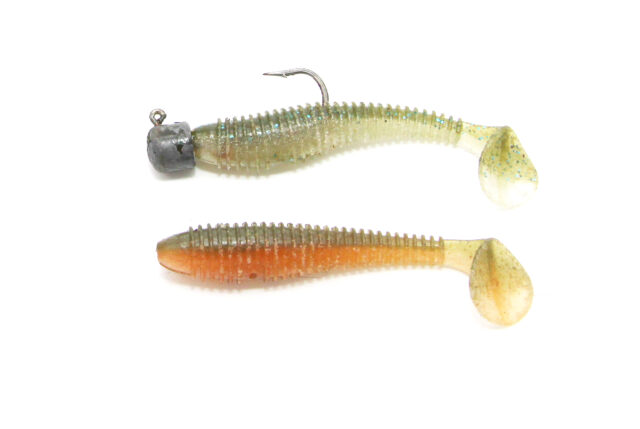
Additionally, The Keitech Fat Swing Impact is another finesse favorite. I was turned on to these on an Indian-summer afternoon in September, 2021 when St. Croix Rods marketing director, Jesse Simpkins, put on a clinic with them. Head-to-head with me, his 2.8 model in Pro Staff Special rigged on a 5/32-ounce ned head caught more than 20 smallmouths compared to the one I caught with an identical 3.8 model of the same bait. The Swing Impact is heavily salt impregnated, and formulated with a softer and supple plastisol. While these features make it deadly, their downfall is poor durability and at a higher cost. Despite these shortcomings, the swing impact remains the most popular paddletail manufactured.
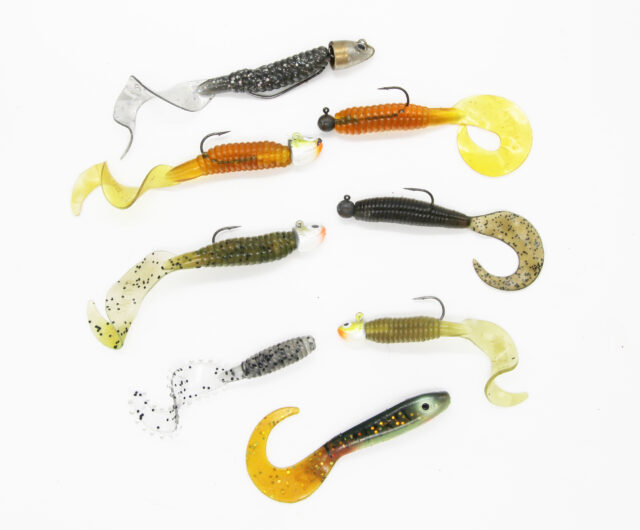
And might you need something even subtler, try a swimming grub.
Whether smallmouths are active or inactive, a grub can always be relied on for catching a few fish, no matter where.
Whether slow rolled and retrieved along bottom, high in the water column, or somewhere in-between, a swimming grub does it all.
The grubs I depend on the most are made by Kalin’s, Strike King, and Berkley.
Kalin’s 5-inch Lunker Grubs fished on exposed ¼ oz. minnow heads are my boat’s fish finders and fish catchers on most days. If downsizing is necessary, in which smallmouths are fixated on smaller prey, consider downsizing to a 3-inch Lunker Grub with 1/8-ounce head. With lighter line it usually seals the deal.
Grubs will imitate everything. I always strive to match the hatch with natural baitfish profiles and translucent colors. On other fisheries such as river systems, smallmouths could be favoriting crayfish instead. Many grubs are available in crayfish patterns.
I fish them with the same aforementioned rods for my paddletails. Casting and steady retrieving them is the standby technique. Jigging and crawling the bottom under slower speeds can be done too, with the only adjustment to consider is usage of a mushroom or football styled head.
Long Rods and Light Line
Hair Jigs
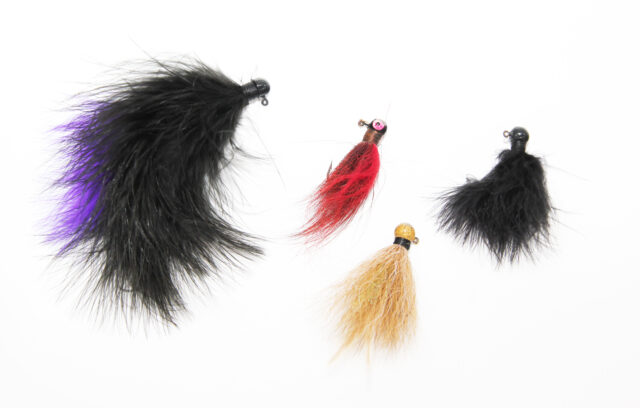
Today’s generation of smallmouth remain unconditioned to the simplicies of a marabou hair jig. The ultra-light weight and extreme slow fall of the hair jig enables it to hang in range of a smallmouth’s strike zone in the upper water column. With the proper tackle, allow the hair do all the work and slow glide for you.
Many of the best quality hair jigs are hand-crafted by avid fly fishermen, anglers, and independent manufacturers. The best marabou jigs I’ve used to date are hand tied by Gregg Kizewski, of 3G Smallmouth Solutions in St. Germain, WI.
Kizewski’s hair jigs are overdressed with pulsating marabou, benefiting the slow glide and hang time. If the jig doesn’t meet personal preferences, snip and remove excess hair to downsize the jig, and increase the fall rate.
The fluff of a marabou jig is dense, slowing its drop. These puff balls are unbeatable when fish are wary, finesse is required, and conditions are calm. 3/16, 1/8, 1/16, and 3/32-ounce hair jigs that achieve hang time and behave as a slow-falling glide bait will stay in the strike zone longest. The technique relies on long, light-powered rods and 5 lb. braided line with a monofilament leader.
“Hair jigs are meant to be swimming baits, not a bottom bouncing bait. But really there are few wrong ways to throw them. I start with a heavier 3/16-ounce jig so I can cover water to find fish. That heavier jig is the only one you can truly power fish. Once I get bit, I will slow down and throw a 3/32 or 1/8-ounce, to see what depth and speed they want in an area,” says Kizewski.
Another winner in my boat is Jim DeZurik’s River Bug. The first time I saw this hair jig in use during a spring 2022 smallmouth trip, I was mind-blown. It out-fished every other hair jig I had in my boat.
The River Bug is medium-density bucktail tied on a painted ballhead jig. It features two neck feathers, which is the jig’s greatest attribute. DeZurik says it creates a minnow profile, and the light tail feathers almost move by themselves when it’s on bottom. In the retrieve, both tail feathers collapse. And on the fall, the tail feathers open slowly. Smallmouths are dumbfounded by it.
You need a long rod with a large capacity spool to get hair jigs out there. I’ve previously favored 7 and a half foot medium light rods such as the Mojo Bass Hair Jig (MJS76MLXF), however St. Croix’s new introduction of the Legend Tournament Hair Jig (LBTS710MLXF) overtook it as being my favorite. It launches them a mile.
Hair Jigs
Lightweight braids are advantageous for the deployment of most finesse baits. Consider a 1/16-ounce hair jig for example. While this ball of marabou or bucktail might have been too light and impossible to cast with the common set-up of years prior, it’s now possible to launch for extreme distances with 8-foot length rods such as St. Croix’s Victory Crosshair (VTS710MLXF) and my personal favorite, the Legend Tournament Bass Hair Jig (LBTS710MLXF).
Spy Baits
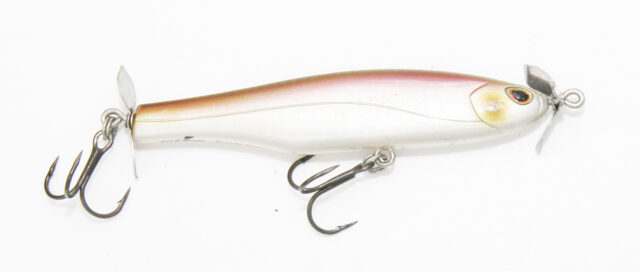
Spy baits can be fished effectively at different levels of the water column. Most anglers fail to understand that spy baiting requires long distance casting with long rods and light line in the form of 5 lb. fluorocarbon or braided line, and painfully slow retrieves in order to maintain its sink rate, quiet profile, and undetectability. The deeper it’s fished, the slower it must be retrieved. The St. Croix Victory Open Water (VTS710MMF) is ideal for the presentation.
The Victory Open Water rod leaves no guessing on what it excels at: Launching baits in big water, open-water scenarios.
The three prong blades of spy baits do majority of the work for you. Also, depending on your cadence and retrieve, you can fish them like a jerkbait, or a slow hanging glide bait, and even snap jig them. When snap jigging, it producehair s a powerful vibration. Let it sink downwards, it has a steady glide with just enough hang time.
Worked thru shallow water, suspended mid-column, and out in the open water abyss, you’ll quickly learn spin baits can often be a solution to catching fish and when nothing else works. The ideal situation for me is flat calm, sunny days and roaming spooky fish.
Smallmouth fishing strategies are quickly evolving more to open water. Whether you finesse fish or power fish, The Open Water is a can’t-miss.
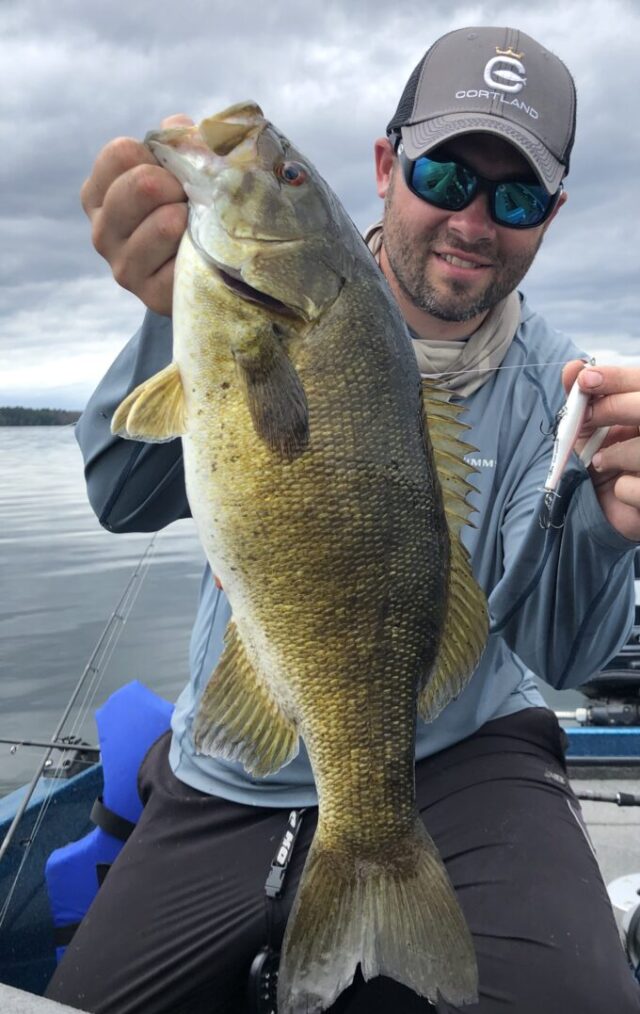
Long Rods and Thin Lines
Your strategies might not be like mine, but hopefully you are utilizing at least one long rod for your fishing that is fast, flexy, and strong like my bomb-casting arsenal of St. Croix spinning setups.
Today’s medium-light and light action long rods are rated for lines as light as 5-pound test. Their fast tops also improve casting accuracy and distance. Lengths help manage and control big smallmouths when hooked from afar and through the duration of battle until successful capture. Their flex also offers better pressure and tension too. The greatest benefit of them all – long rods won’t tire out a big bass to death like short rods of yester-year were prone to do.
Cast lighter lures farther with less effort and no more fatigue. Embrace the long rod mentality, and make magic with finesse.
Andrew Ragas splits time between the Chicago area and Wisconsin’s Northwoods. Based in Minocqua, WI, he specializes in trophy bass fishing and offers guided trips from May thru October. While big bass is the passion, he dabbles in multi-species as well. He may be visited online at www.northwoodsbass.com


